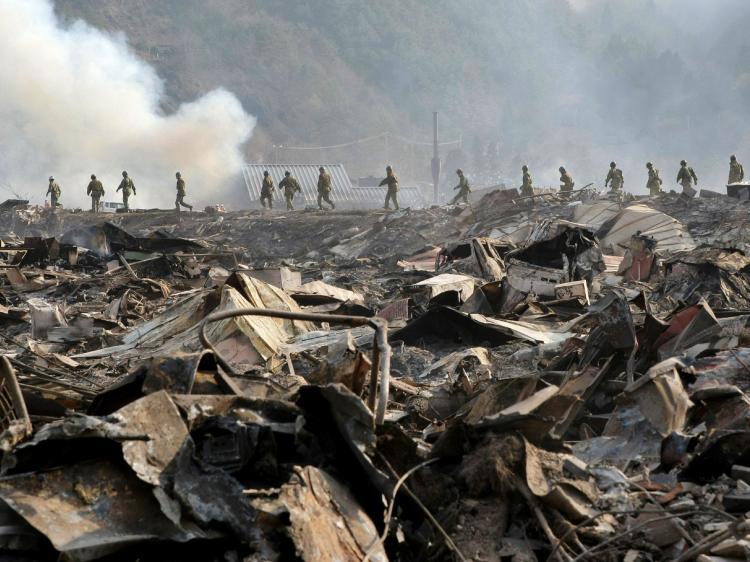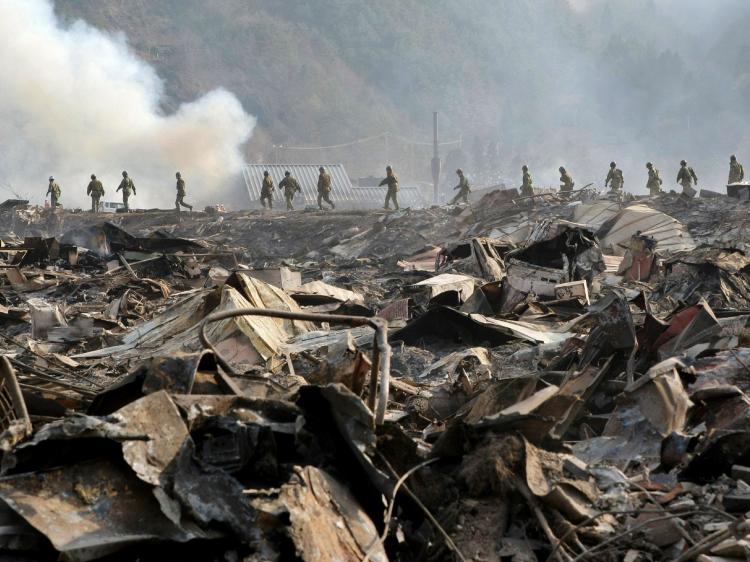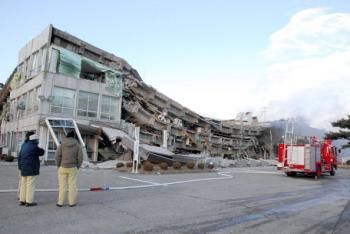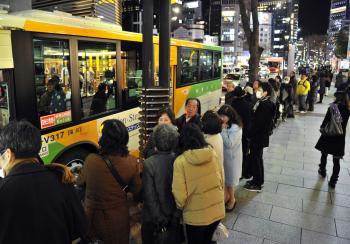Japanese Authories Warn of a Possible Second Nuclear Reactor Explosion
Japanese authorities warned on Sunday that the Fukushima Daiichi No. 3 Reactor could explode.
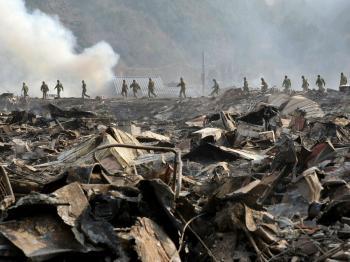
Self Defence troops walk through debris to search for missing people at Otsuchi town in Iwate prefecture on March 13, 2011. Japanese authorities warned on Sunday that the Fukushima Daiichi No. 3 Reactor could explode. Jiji Press/AFP/Getty Images
|Updated:
